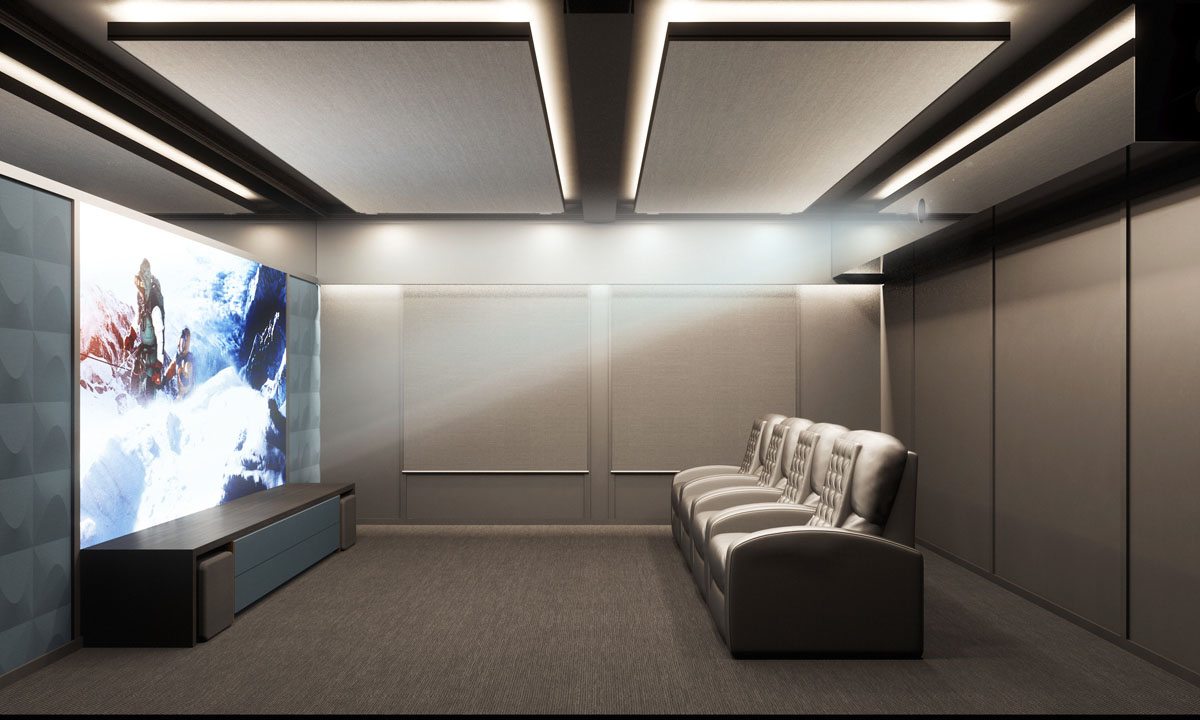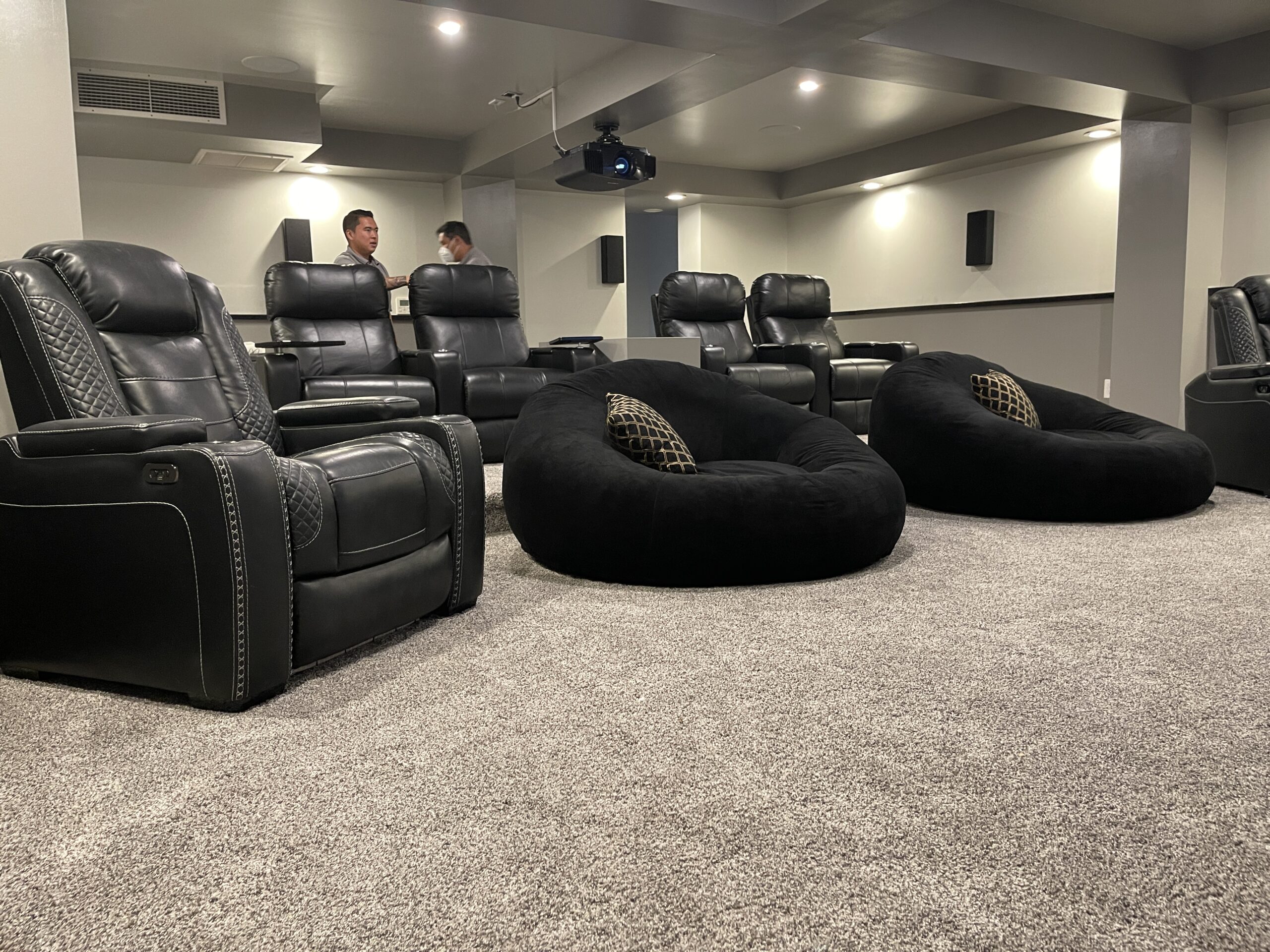Home Theater 101: Everything You Need to Know for a Motion Picture Experience in your home
Producing a home theater that equals the motion picture experience of a business theatre entails cautious consideration of several parts, including display choice, audio systems, and room layout. Each aspect plays a crucial duty in achieving the wanted setting and performance. Whether you are considering the excellent display dimension or the details of surround audio, comprehending these fundamentals is important. As we check out these crucial parts, it becomes noticeable that the choices made can dramatically affect your total watching experience, leaving one to ponder exactly how these decisions will shape your individual movie theater.
Picking the Right Screen
When setting up a home cinema, selecting the appropriate screen can make or damage the checking out experience - tampa home theater. The screen functions as the focal point of your arrangement, affecting image quality, seeing angles, and general aesthetic. Secret aspects to consider include screen size, resolution, and kind
First, identify the suitable display dimension based upon your area dimensions and seating distance. A general standard is to sit about 1.5 to 2.5 times the diagonal display dimension for optimal watching. Next off, choose between various screen types, such as fixed-frame, motorized, or retracting displays, each offering distinctive advantages. Fixed-frame displays generally give the most effective picture top quality, while motorized options permit versatility precede usage.
Resolution is one more critical aspect. For an absolutely immersive experience, consider a display developed for 4K and even 8K web content, guaranteeing sharpness and clearness. In addition, consider the screen's gain, which influences brightness and contrast; a greater gain can enhance illumination in well-lit spaces, while a reduced gain might be better for darker environments.
Selecting Audio Equipment
Audio devices is a crucial element of any type of home movie theater system, dramatically boosting the overall viewing experience. The option of audio gear can identify the depth, clearness, and immersion of sound, critical for developing a motion picture ambience.
When selecting audio devices, think about a border sound system, which typically includes a receiver, multiple audio speakers, and a speaker. A 5.1 or 7.1 channel system is suggested, where the very first number represents the speakers and the 2nd the subwoofer, supplying an immersive soundscape. The receiver is the heart of the system, managing audio and video clip signals, and should sustain modern-day styles like Dolby Atmos for an improved spatial experience.
Quality audio speakers are necessary; appearance for models that offer a balanced audio profile with excellent bass reaction. Floor-standing speakers can produce richer noise, while bookshelf options conserve space. Additionally, think about wireless choices for simplicity of installment, although wired systems commonly deliver remarkable efficiency.

Ideal Seating Arrangements
Developing a suitable home theater experience pivots considerably on ideal seating plans. The setup of seats plays a vital duty in both convenience and checking out high quality, directly affecting the general cinematic experience.
First, consider the display dimension and watching range. An usual standard is to position seats at a distance approximately 1.5 to 2.5 times the angled size of the display. This ensures an immersive experience without stressing the eyes.
Next, read this altitude is crucial. The back rows need to be greater than the front to avoid obstructions if your seats is in a tiered format. For level seats, guarantee that the front row is not too near the display, and that everyone has a clear line of view.
Additionally, consider the setup in terms of social characteristics. Team seats can improve the public experience, while individual seats may be preferred for individual viewing.

Lastly, prioritize convenience with ergonomic seating that supports prolonged watching periods. Incorporating reclining chairs or supported seats can dramatically improve the experience, making the home movie theater a preferred location for both entertainment and relaxation.
Lighting and Setting
Efficient lights and ambiance are important components of a well-designed home movie theater, as they dramatically affect the seeing experience. The appropriate lighting can enhance the cinematic feeling, while bad selections can diminish it. For optimal outcomes, think about a layered illumination technique that includes ambient, task, and accent lights.
Ambient lighting provides basic illumination, ensuring that the area is not completely dark, which can strain the eyes. Dimmer switches are extremely recommended, enabling changes based upon the material being viewed. Job lights, such as wall tampa home theater installation surface sconces or floor lights, uses useful lighting for tasks like reading or navigating the room without disrupting the overall environment.
Accent lights can be utilized to highlight architectural attributes or develop focal points, including depth and interest to the area. LED strip lights behind displays or along shelves can offer a subtle radiance that improves the visual experience without overwhelming the viewer.

Wiring and Installation Tips
A well-planned circuitry arrangement is critical for achieving optimal efficiency in your home theater system. Proper circuitry not just makes sure high-grade sound and video clip signals however also boosts the total visual of your area. Begin by mapping out your format, identifying where each component will certainly be put, including your screen, audio speakers, and receiver.
When choosing cable televisions, prioritize high-grade, properly gauged wiring to minimize signal loss. HDMI cable televisions need to be utilized for video connections, while audio speaker wire need to match the specs of your speakers and amplifier. Go with in-wall ranked cables to abide by safety and security criteria and maintain a tidy appearance.

Conclusion
In summary, developing an outstanding home movie theater experience requires careful factor to consider of various elements, including screen choice, audio devices, seating arrangements, illumination, and circuitry. By focusing on these variables, a motion picture atmosphere can be effectively duplicated, enabling for immersive checking out experiences that equal standard theater setups.
Developing a home cinema that measures up to the motion picture experience of a commercial theatre includes cautious consideration of multiple components, consisting of display choice, sound visit their website systems, and room design.When setting up a home cinema, picking the right display can make or break the checking out experience. Next off, select between various screen types, such as fixed-frame, mechanized, or retracting screens, each offering distinct benefits. For a really immersive experience, consider a display created for 4K or even 8K material, making sure sharpness and clarity.In summary, developing a phenomenal home cinema experience calls for cautious consideration of numerous aspects, including screen choice, audio equipment, seating setups, lights, and wiring.
Comments on “Enhance Your Living Space with Tampa Home Theater Installation”